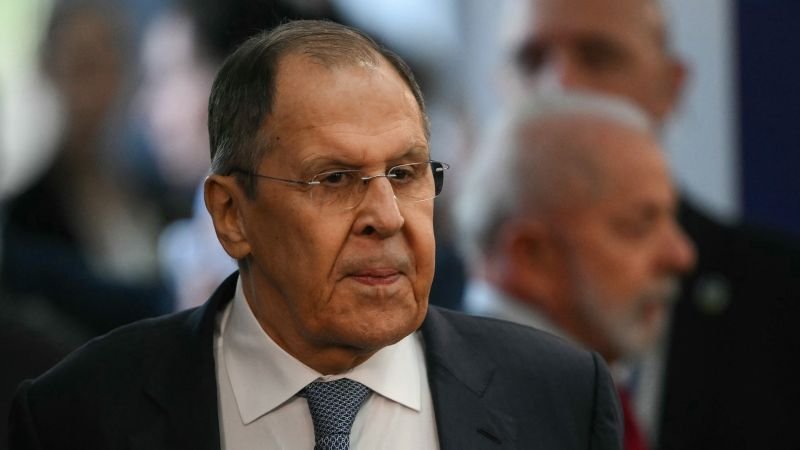CNN
—
Russian Foreign Minister Sergey Lavrov is set to visit North Korea this weekend, in a sign of deepening relations between Moscow and Pyongyang as North Korea gets pulled deeper into Russia’s war in Ukraine.
Lavrov “will make a visit to the Democratic People’s Republic of Korea on July 11-13 for the talks that will be held as part of the second round of strategic dialogue between the top diplomats,” foreign ministry spokesperson Maria Zakharova said, according to Russian state media agency TASS.
North Korea’s state news agency, KCNA, also reported Wednesday that Lavrov would be visiting “at the invitation of” Pyongyang’s foreign ministry.
Lavrov’s trip comes at a crucial time for Russian-North Korean relations, with Pyongyang set to deploy an additional 25,000 to 30,000 soldiers to assist Moscow’s scaled-up assault on Ukraine, according to Ukrainian intelligence – adding to the estimated 11,000 soldiers Pyongyang sent last year.
It also comes as the US has grown increasingly frustrated with Russia. US President Donald Trump has accused his counterpart Vladimir Putin of throwing “bullsh*t” at peace talks, and pledged more support for Ukraine.
The trip could further strengthen an alliance that has the potential to reshape not only the war in Ukraine but the security dynamic in Asia.
While in North Korea, Lavrov will likely sit down with his North Korean counterpart Choe Son Hui, who visited Moscow for the first round of strategic talks in November 2024, according to TASS. At the time, Lavrov praised what he called “very close contacts” with the North Korean military and intelligence services. It’s possible Lavrov could also meet with North Korean leader Kim Jong Un.

Despite sustaining heavy battlefield losses, North Korea has become increasingly integrated into Russia’s war. An estimated 4,000 North Korean soldiers have been killed or wounded in Russia, according to Western officials.
On the ground in the Russian border region of Kursk, where North Korean soldiers helped repel Ukraine’s incursion last year, the reclusive state’s soldiers are reportedly living in dugouts, fighting – and dying – alongside Russian troops.
Satellite images obtained by CNN showed cargo planes and troop transport ships moving between North Korea and Russia, hinting at major military logistics underway.
Facing shortages on the front line, even as its own factories work round-the-clock, Russia has become reliant on North Korea for additional weaponry.
Training manuals for North Korean artillery have been translated into Russian, in a sign of both the ubiquity of the weapons and the increasing interoperability between Moscow’s and Pyongyang’s armed forces. A report from 11 UN member states last month said that Pyongyang sent at least 100 ballistic missiles and 9 million artillery shells to Russia in 2024.
Russia has intensified its aerial assault on Ukraine in recent weeks, launching a record 728 drones and 13 missiles Wednesday. On Thursday, Russian drones attacked the capital Kyiv from all directions in an apparent new tactic that tested Ukraine’s strained defenses.

